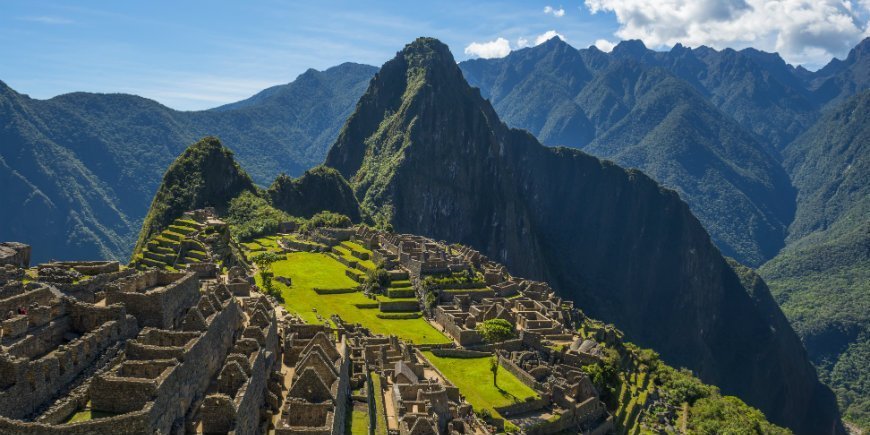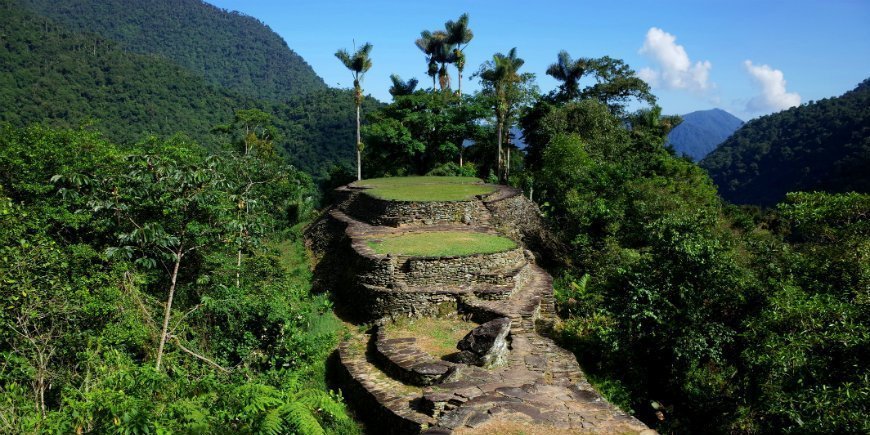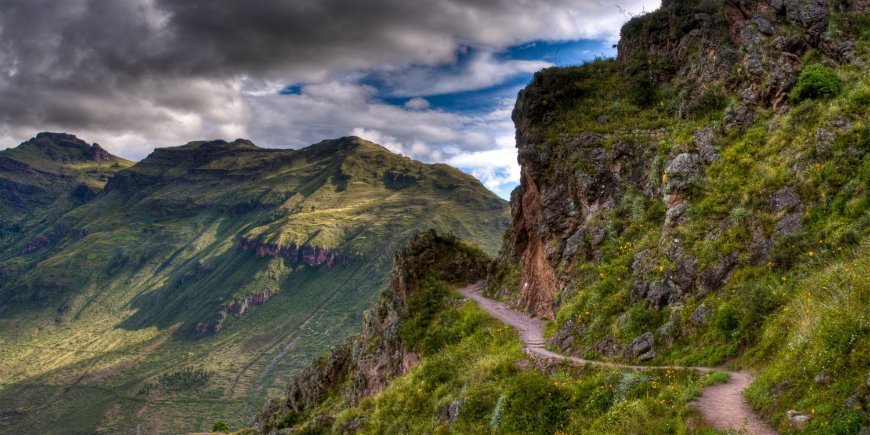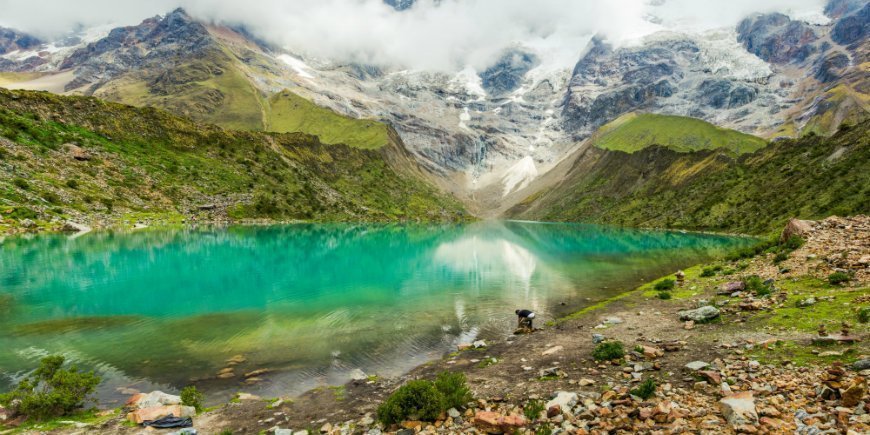Trekking in South America
01.10.2018
If you’re heading to South America, there’s one thing you won’t want to miss: trekking.
South America has some world-famous trekking adventures on the menu.
Breathtaking mountain views, sunrise over the mountain ridges and fascinating cultural experiences are just some of the things that await you in the heights of Latin America.
Read about three fantastic trekking holidays that are part of some of our tours to Peru and Colombia below.
Lost City trek in Colombia

The Lost City trek is for adventurous souls who like a challenge. From the outset, the trek makes no bones about what is expected, as you force your way through the jungle of the Sierra Nevada Mountains for four days on your hike towards the “forgotten city” of the Tayrona people, Ciudad Perdida, better known as the Lost City.
High humidity, high temperatures, roaring rivers and primitive accommodation are just some of the things that await those who embark on this phenomenal trek in Colombia.
Along the way, you’ll enjoy a lot of stunning scenery in the lush jungle as well as small local tribes and villages. The trek starts out in the jungle, where there is ample opportunity for wonderful nature experiences. The second day of the trek is the hardest, among other things because the Buritaca River has to be crossed no fewer than nine times!
On the third day, you reach the climax of the tour: the ruin complex Ciudad Perdida, built by the Tayrona people in around 800 AD. The complex, better known as the Lost City, is magnificent, but a little hard to get to. First, you will have to climb 1,200 steep steps before finally being able to enjoy the spectacular view, which is located over an area of 35 hectares. The guide recounts the fascinating history of the Lost City as you explore the many paths and terraces.
Fully genned up on the history, you can enjoy the beautiful scenery that surrounds the fascinating ruin.
After the culmination of the tour, it’s back down the same way, as this is the only route to and from the Lost City. After a good night’s sleep at the camp and a good hike down, the adventure is over, and you will be driven to your hotel in Santa Marta, where you can celebrate the events of the last few days with a hot bath, a soft bed and perhaps a victory beer!
Five fast facts about the Lost City trek:
Length: 4 days/3 nights, around 50 km in total.
Level of difficulty: Moderate to hard
Highest point: The Lost City ruins, situated at an altitude of 1,200 m.
Accommodation: Three nights at a jungle camp.
Why this trek? The trek for adventurous souls who love a challenge. As Lost City is only accessible by foot, it’s not a trip for everyone. The trek is about 45 km long, and the highest point is at an altitude of 1,200 m, so there’s no risk of altitude sickness on the actual trek.
The Inca Trail in Peru

The Inca Trail to the Machu Picchu ruin complex in Peru is probably one of the world’s most famous treks. Listed as a World Heritage Site back in 1983, the Inca ruins are one of the seven wonders of the world.
The trek to the ruin city offers everything from high, snow-capped mountains, valleys, open landscapes, cloud forests, rivers and local villages. Terrain-wise, the trek takes you through hard, steep passages, but there are also flatter parts where you can enjoy the walk a little more.
The first part of the trek is flat and that gets things off to a good start. Today, you can enjoy the stunning landscape overlooking the highest mountain, Mount Veronica, which is 5,750 metres high. The second day is the hardest, taking you up to an altitude of 4,200 metres at the Warmi Wañusqa Pass – also known as “Dead Woman’s Pass”. Altitude sickness is a possibility, so please heed the advice of the guide. However, you will descend again before climbing again on the same day. Fortunately, some beautiful ruins provide a distraction from the tough trek along the way.
And ruins feature on the third day, too, when you see the beautiful Inca stone work at the third pass before descending once again – this time along the long descent to Wiñay Wayna. The place oozes history, and the closer you get to Machu Picchu, the more you feel the Inca presence.
On the fourth day, you get what you came for – the climax of the tour: Machu Picchu. When you see the Inca city from the Sun Gate, bathed in the first rays of the morning sun, it’s as if time is standing still. The rigours of recent days are gone in an instant. The closer you get to the ruin, the more breathtaking it is in its complexity. Enjoy the beautiful view and take a mental image you can bring home with you.
Machu Picchu’s beauty is not something you’ll forget in a hurry.
Five fast facts about the Inca Trail:
Length: 4 days/3 nights, around 45 km in total.
Level of difficulty: Moderate to hard
Highest point: The Warmi Wañusqa Pass at an altitude of 4,200 m.
Accommodation: Three nights at a tent camp.
Why this trek? This trek is for those looking to experience the classic, world-famous route to Machu Picchu. It is one of the most scenic treks in the world, and if you don’t mind sharing the trip with other trekkers, it will be an experience of a lifetime. Please note that you can also experience the Inca Trail on a short, 2-day trek on the Inca Trail.
The Salkantay Trek in Peru

The Salkantay Trek is not nearly as well-known as the Inca Trail, but both take you to the outstanding Machu Picchu. The Salkantay Trek is every bit as beautiful as the Inca Trail, but far fewer people choose to take this route, giving you a more private experience if you do.
The scenery is spectacular and features stunning views of landscapes, mountains, lagoons, forests, villages, greenery and much more besides.
The trek starts in Marcoccasa, and the amazing experiences start on the very first day with Humantay Lake, which is located at an altitude of 4,220 metres. The scenery also changes a lot today – from dense vegetation and cloud forest to the Soraypampa valley. On the second day, the hardest trekking awaits you, as you have the Salkantay pass to contend with. However, the views make up for the effort it has taken to get up there. The pass is located at an altitude of 4,600 m and it is the highest point of the trek. But thankfully, it’s downhill (literally!) from there, with vegetation changing from gold to beautiful, lush rainforest, and you camp at an altitude of 3,300 metres. The first two nights of the trek are spent in a tent camp.
On the third day you’ll hike along the ancient Inca paths, taking you past several coffee plantations and orchards. After lunch, you take the train to the town of Aguas Calientes, which is located at the foot of Machu Picchu. You spend the night at a hotel, where it is a good idea to enjoy an early night to ensure you are well-rested for tomorrow’s big event.
On the fourth and final day, the wait is over. Early in the morning, you will finally get to see Machu Picchu. The beautiful ruin complex stands in all its glory, surrounded by mist with beautiful mountain peaks in the background. You get right up close to the impressive construction, built by the Incas some 550+ years ago. After an exciting guided tour, there is time for you to explore the many ruins and enjoy the breathtaking scenery around you.
You’ve completed the Salkantay Trek, and the magnificence of Machu Picchu will stay with you forever.
Five fast facts about the Salkantay Trek:
Length: 4 days/3 nights, around 52 km in total.
Level of difficulty: Moderate to hard
Highest point: The Salkantay Pass, situated at an altitude of 4,600 metres
Accommodation: Two nights at a tent camp on the trek and one night at a hotel in Aguas Calientes.
Why this trek? If you want to experience Machu Picchu, but to trek there along a less trafficked route, the Salkantay Trek is the one to choose.
Want to enjoy trekking experiences?
Trekking is an indescribable and formidable way to experience the nature of a country.
Are you ready to dig out your hiking boots and enjoy the experience of a lifetime?
If you have any questions, please feel free to contact our travel consultants, who are on hand to advise you on the perfect travel experiences.
TourCompass
